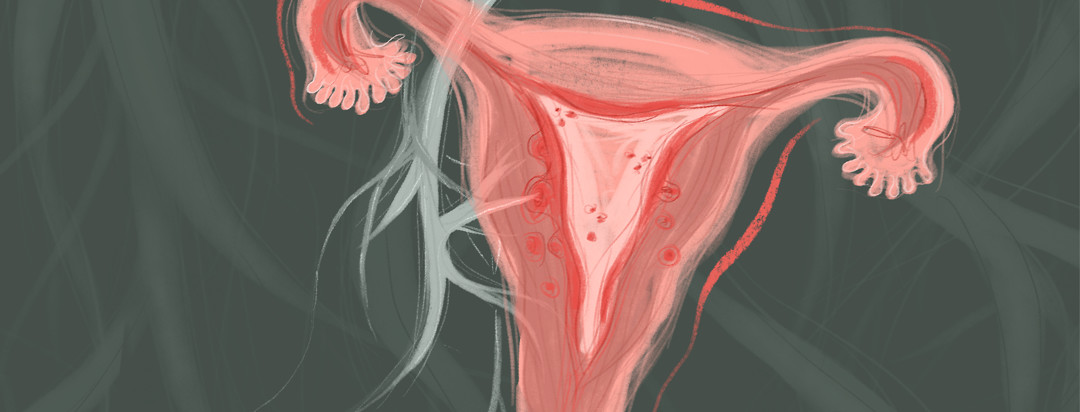What is a UAE And Is It an Appropriate Treatment for Adeno?
Recently, I was seeking out a second opinion for my planned hysterectomy at the end of this year (which I had intended to have with my second, and hopefully final, lap surgery for endo).
My treatment journey
In addition to endometriosis, I also have adenomyosis, which is when endometrial cells penetrate the walls of the uterus and get inside the layers of the muscle. If that sounds painful, that's because it is. You usually can't remove adeno unless you remove the actual uterus. To add insult to injury, I also have several fibroids and a polyp as well. In other words, my uterus is thoroughly diseased. And I am tired of the heavy bleeding and misery I go through every month (sometimes multiple times a month). As such, I was finally willing and ready to evict my uterus.
However, the surgeon I saw surprised me by asking me if I ever considered the possibility of having a UAE to treat the adeno instead. UAE stands for "uterine artery embolization". It - technically - is not a surgery, but a procedure in which the artery leading to the uterus is blocked by artificially causing a small embolism or series of small embolisms. This kills off the blood supply to a section of the uterus. UAE has been pretty successful in treating certain fibroid conditions - because the blood supply feeding that fibroid is killed off and the fibroid, in turn, shrinks and dies.
What does the research show?
The success of UAE in treating adeno is more shaky, at least since the science is still relatively more recent as applied to this diagnosis. I decided to do some research and this is what I found:
One study noted those who had a UAE who had both adeno and fibroids reported "significant improvement", with 72% of patients claiming to be at least "fairly satisfied" with UAE and 82% reporting they avoided a hysterectomy. This seems to be a heartening study. Yet, it does note over a third (36%) of participants reported menopause in the seven year follow-up; However, it's not clear if this was organic menopause or premature, and if latter, if the UAE played a role in bringing on early menopause.1 That is something I want to look more into before making my decision.
Another peer review paper I read was more of a review of the science regarding what is known about the use of UAE for adeno. It stated that the highest ratio of dissatisfaction or failure of UAE is about 50% - odds that definitely aren't the best, but aren't terrible either (and that other studies had far better results in favor of UAE). Specifically, the review concluded that "data shows that UAE for adenomyosis is not perfect, but more than half of the patients who undergo this treatment report either partial or complete resolution of their symptoms after follow-up as long as 3 years".2
Another study published in 2007 that analyzed women who had UAE procedures between 1998 and 2000 found that "Thirty-one (57.4%) of the 54 women who underwent follow-up had long-term success" in alleviating their symptoms.3 While the most recent study abstract on the subject of the application of UAE for adeno found it improved the symptoms in 83% of those who had it and that "The effects of UAE on symptom improvement and uterine volume reduction in patients with adenomyosis are encouraging".4 It seems the procedure may have been improved over the years, and outcomes are not better.
Asking around
Still stumped, I decided to asked around online about this. I found only a couple of women who had UAEs. They were satisfied with the procedure, though admittedly I found their accounts very shortly after they had it so don't know if their long-term experiences will remain positive. One Facebook page for women with adeno held a tally asking who had UAE for adeno to rate their experiences. About a half-dozen replied and almost all said it didn't help much or at all. Though it is worth nothing all who it didn't help had diffuse adeno (which is when it is spread out throughout the uterus) versus focal adeno (when it is concentrated in a single spot). I have focal adeno, which is usually considered a better candidate for a successful UAE.
Where do I stand now?
Well, I am still deliberating. I have a pelvic MRI scheduled very soon followed by a UAE consultation with a radiologist and I will be returning to my surgeon I have my lap scheduled with in November to discuss what I learn and get his input. It may be possible to try UAE in the next month or so and if it doesn't work, I can still opt for my hysterectomy at the end of the year.
I will let you all know what I finally decide!

Join the conversation